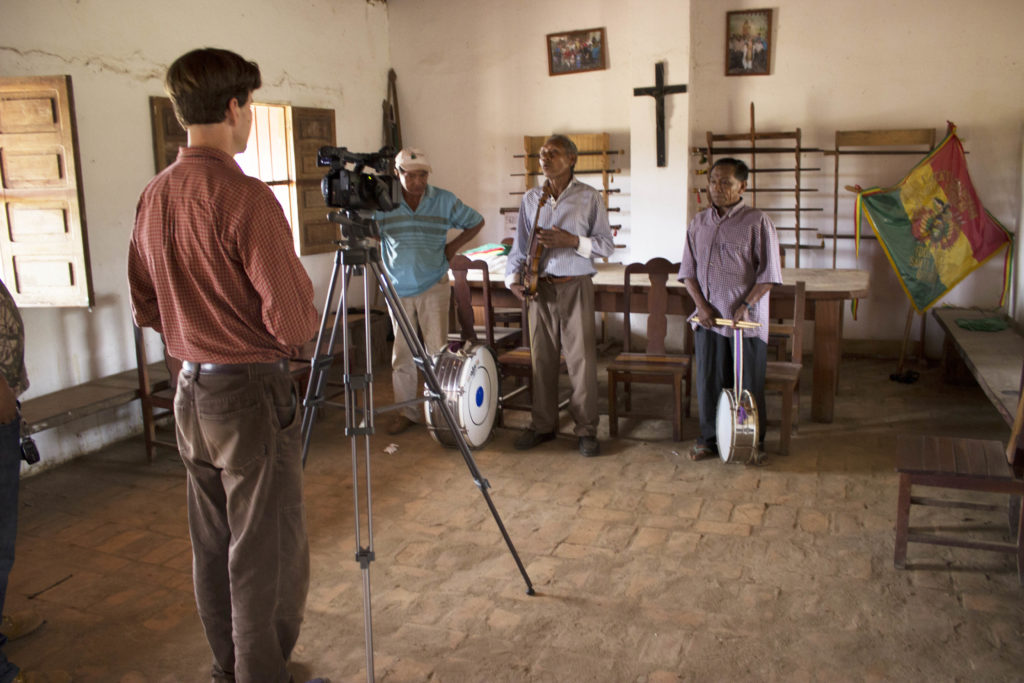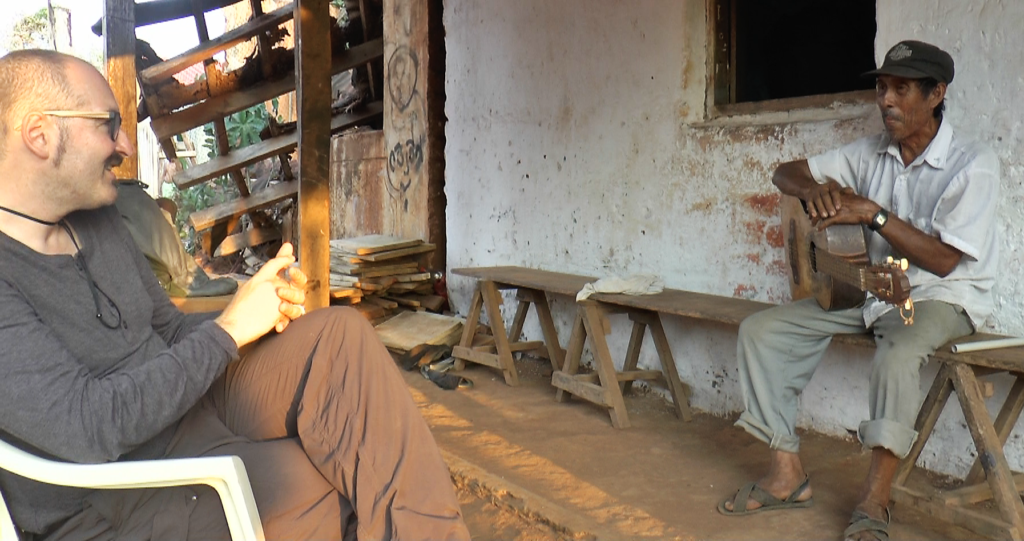Faculty Collaborative Research Grant Recipients: Derrick Hindery, Department of International Studies, and Juan Eduardo Wolf, School of Music and Dance
At the confluence of Bolivia’s Amazon and Chiquitano Forests, the town of Urubichá boasts an internationally renowned orchestra, children’s choir and music school—all well-versed in the Baroque music practices that Jesuit and Franciscan missionaries introduced to the Indigenous Guarayos who live there. Urubichá lies within a special type of land reserve called a Territorio Comunitario de Origen, or communal indigenous territory. While the 1.5-million-hectare region is not yet legally recognized as an autonomous zone, the Guarayo people hold it in common and have the daily responsibility of managing it. As part of this management, the Guarayos have been praised for the work plans they have in place to sustainably harvest the lumber on this land.

This combination of a well-developed musical community and an awareness towards environmental sustainability was what led UO professors Derrick Hindery and Juan Eduardo Wolf to wonder if these successes logically emerged from Guarayo worldview. In September 2018, Hindery and Wolf were able to begin their research with Guarayo musicians, educators, and land management thanks to a CLLAS faculty collaboration grant. The grant is designed to offer UO faculty from different units across campus the opportunity to work together. Hindery is an environmental geographer who teaches in the Department of International Studies and Wolf is an ethnomusicologist who teaches in the School of Music and Dance.
As often happens in fieldwork, the researchers’ initial plans had to be modified based on local circumstances. Hindery and Wolf arrived just as a patron saint celebration was being held in the neighboring town of Yaguarú. While this celebration made it difficult for Hindery and Wolf to hold the originally anticipated meeting with local elders, it gave the researchers the opportunity to meet several key local musicians and document performance of Guarayo music-making in context. Much of the music performed was for the Catholic ritual processions and masses, but the researchers learned of other types of traditional music-making in the cabildo, or community meeting house. Initially, Hindery and Wolf found themselves at a loss as how to connect this music making with how native worldview understands the surrounding environment. Many of these melodies in this genre known as chovena were instrumentals played on conventional violins in the compound tertiary meter found throughout Latin America. In multiple follow-up interviews with additional musicians, however, Hindery and Wolf realized that there were lyrics in the Guarayo language for many of the songs. It was just that this repertoire was not necessarily being sung as much anymore. In fact, the songs that the researchers were able to elicit from a few of the older musicians even included Guarayo words that had fallen into disuse. Some of these lyrics also referenced the local flora and fauna, that when coupled with Guarayo mythology, began to suggest additional research directions for learning about local worldview.

Things were not as expected in the implementation of the managed logging plans either. Local Guarayo leaders took the researchers on a tour of the territory, pointing out how illegal logging and cultivation of cash crops by the third party intruders were undermining the previously lauded plans. The growing demand for timber, both domestically and internationally, has created some tension within the community, which has become increasingly dependent upon the fees the logging industry pays for the use of the land. While these distributions help offset the limited employment opportunities in Urubichá, a few individuals try to earn additional income by “selling” their share of the land to outsiders or working as agricultural laborers for those outsiders, both of which are illegal. Despite these challenges to the well-being of the Guarayo territory, Hindery and Wolf did encounter Guarayo artisans who were producing local goods sustainably as well as leaders who were looking to curb illegal deforestation and to diversify their sources of income.
Hindery and Wolf also tried to be supportive of the community during their short trip. Wolf gave a series of introductory lectures on ethnomusicology to the teachers of the local music institute. Hindery used his skills as a geographer to help map the locations of the illegal deforestation. Both left copies of their research footage with local participants so the community could keep their own archive of their visit. UO’s School of Music and Dance also donated a piccolo to the Urubichá Music Institute. Although their time in the Guarayo territory was limited, the researchers were able to lay the grounds for future collaborative research, and they were grateful to CLLAS for making the trip possible.
